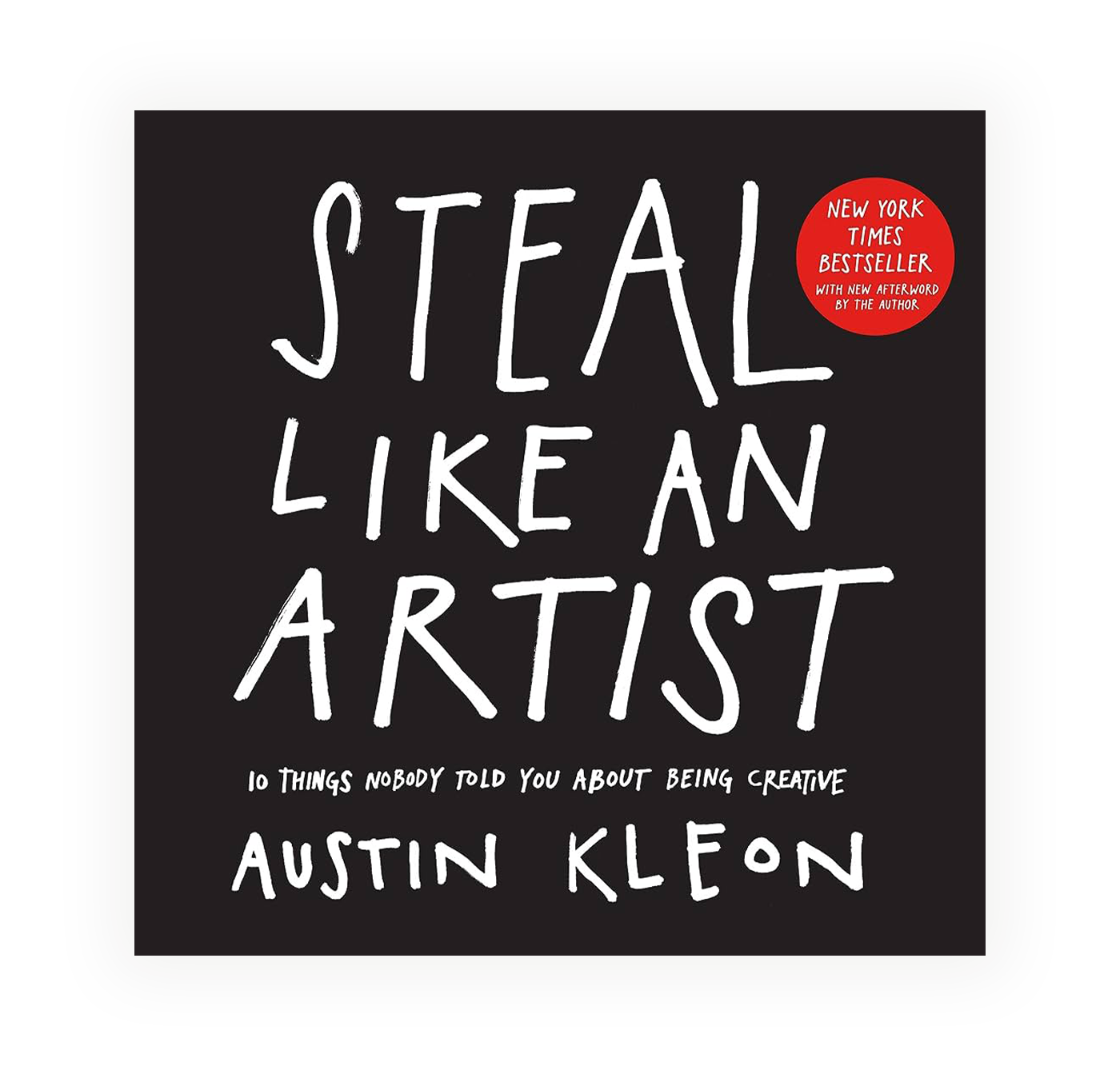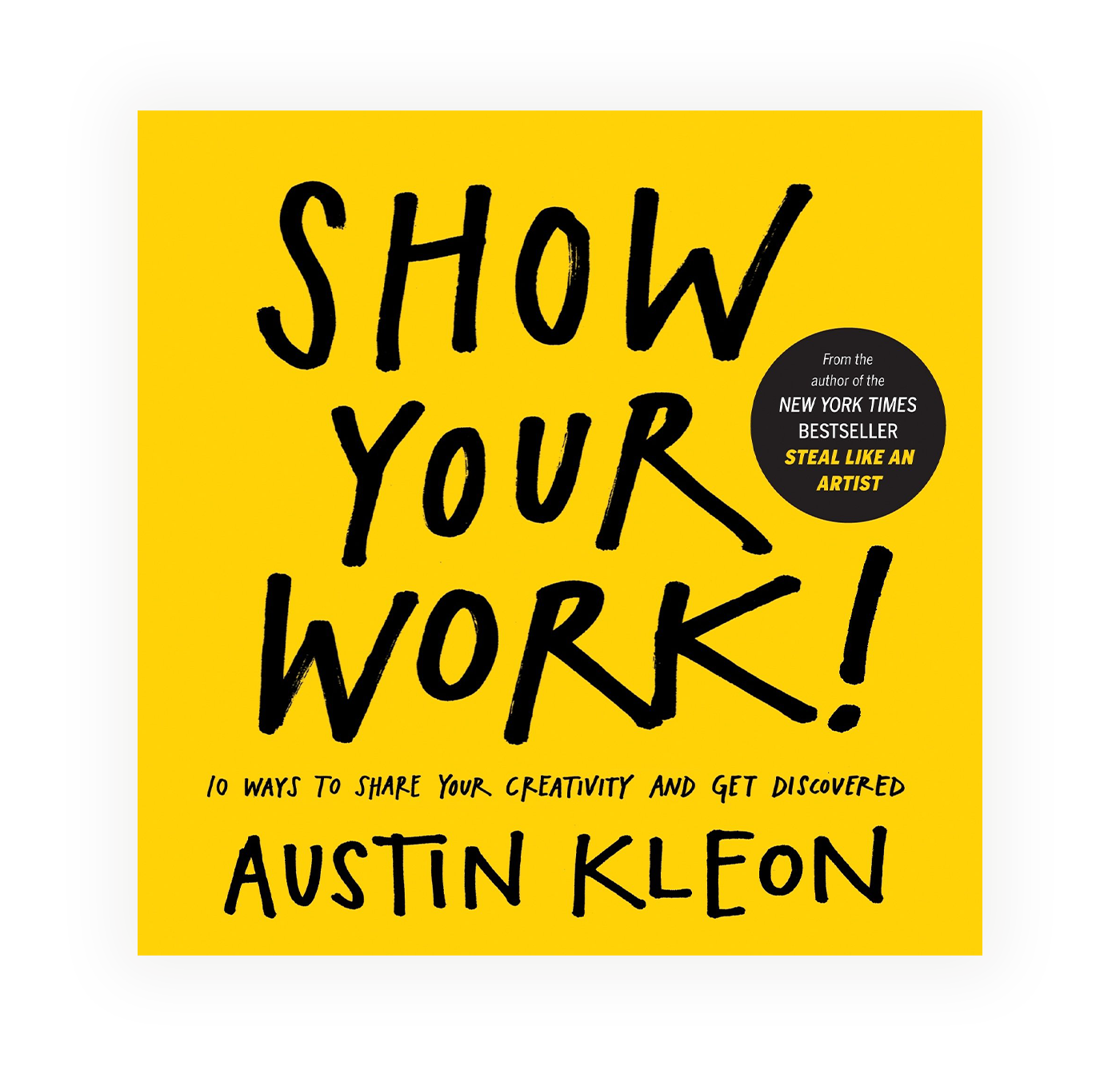Steal Like An Artist (Austin Kleon) – Book Summary, Notes & Highlights

My rating: 8/10
•
5 minutes read
Intro
An encouragement for creatives to embrace influence and inspiration from others. Kleon’s book inspires readers to develop their unique creative voice by borrowing and remixing ideas from a diverse range of sources while staying true to their own vision.
The book in 3 sentences
- Nothing is original today—everything is a remix. Even the big artists you admire have “stolen” ideas from others before them. Use that knowledge to inspire your journey.
- Start today. Don’t overthink it, just start putting work out there. In time you’ll get better at it and you’ll find your own voice.
- Be a good person, both online and offline.
Impressions
For me personally, Austin Kleon played and is still playing a big role in my creative journey, hence the second book I’m reviewing is also his. This should be common knowledge for everyone in the creative industry, especially for those always striving to create original work.
It doesn’t mean we have to leave our strokes of genius behind and aim for originality every chance we get. It means that most of our work will be somehow inspired by our influences, whether we like it or not. And ultimately something original can also find its roots in others’ work.
Who's this book for
I completely agree with Austin’s thinking on this: “These ideas apply to anyone who’s trying to inject some creativity into their life and their work. (That should describe all of us).” Couldn’t have said it better myself.
How this book changed me
I wouldn’t say that, for me, this is a life-changing book. Not when compared to “Show Your Work” by the same author. But then again “life-changing” is highly subjective. However, the main idea here is something that people dealing with any sorts of creative work should be familiar with, in my opinion. Good work isn’t done in a vacuum, but a sum of our experiences and inspiration.
Top 3 quotes
- “Art is theft.” — Pablo Picasso
- “If you copy from one author, it’s plagiarism, but if you copy from many, it’s research.” — Wilson Mizner
- “It is our failure to become our perceived ideal that ultimately defines us and makes us unique.” — Conan O’Brien
Book notes and summary
In the book’s introduction, Austin mentions that one of his theories is that “when people give you advice, they’re really talking to themselves in the past” and I can’t agree more with that. I’d love to be able to go back in time and whisper some knowledge in my ears.
Also, Austin acknowledges that this book doesn’t only apply for creative people, but to anyone else dealing with any kind of creativity. I also strongly agree with that.
1. Steal like an artist.
An honest artist would admit that stealing ideas is their modus operandi. However, there are ideas worth stealing and ideas that aren’t, and that’s completely subjective. “You’re only as good as the stuff you surround yourself with.”
Nothing is original nowadays. All creative work is based on what’s already created.
How to go about it? Climb your own (creative) family tree. Study someone you find fascinating, then study people that thinker studied, liked, or looked up to. Rinse and repeat.
Never stop learning and studying. Look things up. “Go deeper than anybody else—that’s how you’ll get ahead.” Make sure you learn how to and take meaningful notes, too.
2. Don’t wait until you know who you are to get started.
If you believe that waiting around until you find your voice is the way to go, you’re wrong. “It’s in the act of making things and doing our work that we figure out who we are.” Start today, and don’t let impostor syndrome stop you. We all have it, especially creatives.
“Fake it ’til you make it.” Pretend to be someone you want to be until you get to be that person.
Learn to copy first, you’ll find your own voice later. Who to copy? Start with your heroes. What to copy? Both their style AND the thinking behind the style. Learn to see like them, then instead of imitating you’ll start emulating.
3. Write the book you want to read.
Start by writing what you like instead of writing what you know. Write the stuff you want to read yourself. Now take the word “write” and replace it with the verb that suits you best.
“Draw the art you want to see, start the business you want to run, play the music you want to hear, write the books you want to read, build the products you want to use—do the work you want to see done.”
4. Use your hands.
“In the digital age, don’t forget to use your fingers” — Linda Barry. Staying at the computer and only using that for you work kills you and your creativity. Step away every now and then and do things with your hands. Have two desks, one digital and one analog.
5. Side projects and hobbies are important.
Practice productive procrastination. Reserve time for you passion projects, they have a big chance of taking off. Switch between projects when one becomes monotonous.
Take time to be bored. This is especially true for creatives—we need time to sit around and do nothing. That’s where we get some of our best ideas.
Don’t forget yourself. Don’t let any of your passions or hobbies die down, you need them. They make you happy.
6. The secret: Do good work and share it with people.
Main takeaway: start now. Start putting work out there. It’s not going to be your best work but not very many people will see it anyways, and that’s good for now, “you want attention only after you’re doing really good work.” Use your obscurity and just start sharing with people.
Share your secrets in a smart way, people love it and you’ll get a following. And the best part? You’ll get to learn from those people, too. And if you’re worried about giving your secrets away, you can “share your dots without connecting them.”
7. Geography is no longer our master.
Most (if not all) of our favourite artists don’t live in our vicinity. You only need an internet connection to be connected to the world.
Surround yourself with the things that you like and enjoy time alone. Use that to inspire your creativity. Don’t just sit at the desk—leave home once in a while. Travel and discover new things.
8. Be nice. (The world is a small town.)
Make friends and ignore enemies, especially online. Follow the people that are “way smarter and better” than you. Pay attention to them and what they do. If you’re the most talented/smarter person in the room, change the room.
You’ll see a lot of stupid stuff out there; stuff that’ll anger you. Use that anger as motivation to go do something yourself.
Write “public fan letters” about your heroes. Talk about their work or make something in their honour. Show appreciation and don’t expect anything in return.
9. Be boring. (It’s the only way to get work done.)
Don’t forget to take care of yourself. A healthy mind is sustained by a healthy body.
Learn about money sooner rather than later. Start saving and learn to invest only in what matters.
Keep your day job until you can afford to go on your own. Do the work every day and get yourself accustomed to a routine, it’ll help in the long run.
Get a calendar and start marking every day you did something. Don’t break the chain. And even if you do, get back on track the next day, don’t be too hard on yourself—that’s coming from me.
Keep a daily logbook.
Find a good life partner. Who you marry is the most important decision in your life. Make sure you find someone you’re fully compatible with.
10. Creativity is subtraction.
There’s a lot of stuff that catches your eye out there, so make sure you focus on what matters. Set the right constraints and start working now, no excuses. “In the end, creativity isn’t just the things we choose to put in, it’s the things we choose to leave out.” Choose wisely and have fun.
